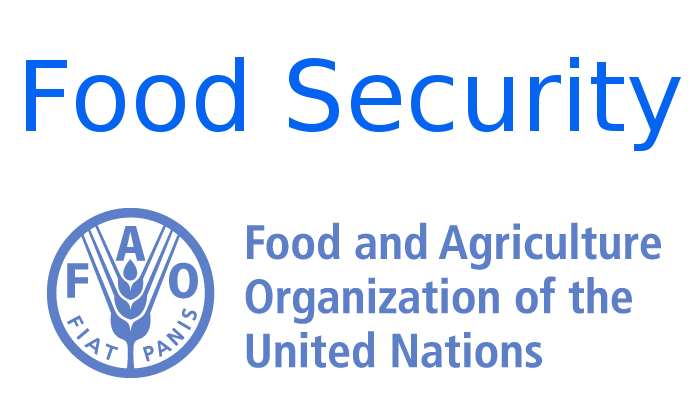Breadcrumb
- FAO - Food Security
This dataset contains a suite of indicators (available from 2017) on the level of food security in several countries as provided by FAO.
The selection of the indicators included in this dataset is based upon the FAO suite of Food Security Indicators, which includes 21 indicators grouped along the four dimension of food security (Availability, Access, Utilization and Stability). Another 10 indicators are included as “additional useful statistics”.
The new suite of food security indicators is composed of a revised selection of indicators based on the SDGs monitoring requirement and data availability. For example, some of the utilization indicators are replaced with official SDGs indicators. In addition, a new indicator for measuring severe food insecurity based on the Food Insecurity Experience Scale (FIES) is included. The choice of the indicators has been informed by expert judgment and the availability of data with sufficient coverage to enable comparisons across regions and over time. Many of these indicators are produced and published elsewhere by FAO and other international organizations. They are reported here in a single database with the aim of building a wide food security information system.
Data from the FAO suite of food security indicators can be accessed on FAOSTAT.
Why do the FAO Food Security Indicators matter for the Land Community?
Producing food for the world’s growing rural and urban populations will depend on land use decisions and governance from the global to the local level. Improving food security at both the global and local level will require land governance that creates incentives for greater productivity and improves access to nutritious food for the poor and vulnerable, without creating further strain on environmental services. Smallholders have a vital role to play, both because they produce much of the world’s food and because they represent a large share of the world’s poor and food insecure. More efficient use of agricultural land can boost crop yields and meet growing global demand for food. Records on e.g. the percentage of arable land equipped for irrigation indicates weather investments are taken. At the local level, land tenure security, along with access to other resources, is linked with increased productivity and investments in land fertility, which in turn can increase food security. Addressing new challenges like climate change require investments in sustainable and climate-smart intensification. Secured tenure is an incentive for taking these investments. Hence, indicators like the number and prevalence of severely food insecure people, indicate both tenure (ins)stability as well as a report on the ultimate goal of securing access to land for the vulnerable: Food security.
Availability
Access
| Indicator | Min-Max Number of years |
Countries / Obs | Min / Max Value |
|---|
Partners:
Donors:
License:
To ensure wide dissemination of its information, FAO is committed to making its content freely available and encourages the use, reproduction and dissemination of the text, multimedia and data presented. Except where otherwise indicated, content may be copied, printed and downloaded for private study, research and teaching purposes, and for use in non-commercial products or services, provided that appropriate acknowledgement of FAO as the source and copyright holder is given and that FAO's endorsement of users' views, products or services is not stated or implied in any way.
More details in the FAO Terms and conditions webpage.
Official site:
Related issues
Related LandVoc tags
Download this Dataset data.

